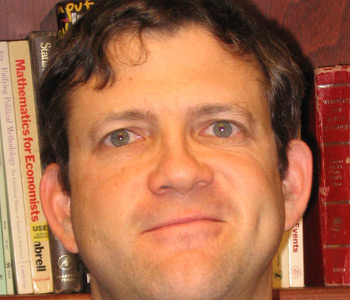Tim Lomas
Translating Happiness: A Cross-Cultural Lexicon of Well-Being
MIT Press
240 pages, 6 x 9 inches
ISBN 978 0262037488
Translating Happiness celebrates the idea that untranslatable words – terms without an exact equivalent in our own language – can expand our emotional, intellectual, and even experiential horizons. Such words represent phenomena or ideas which have been overlooked or underappreciated in one’s own culture, hence the lack of a specific signifier. Crucially though, they have been identified and labelled by another culture, from whom we can learn. These words therefore have the potential to help us better understand and articulate our experiences, providing us with new linguistic tools to make sense of our world. They can even reveal new phenomena, which had previously been veiled to us, pointing us towards realms of life which we had not before noticed.
The book is based on an on-going lexicographic research project, initiated in 2015, to collect and analyze untranslatable words. To limit its scope to a manageable area of enquiry, the project’s focus is on wellbeing, specifically. This is because I am a researcher in positive psychology, which is essentially the scientific study of wellbeing. The lexicography currently comprises over 1,000 words, many of which have been crowd-sourced through generous contributions to a website I created to host the project. My analytical approach to these words has been to explore and organize them thematically. I have identified six main categories, each encompassing many different themes. These are positive emotions, ambivalent emotions, love, prosociality, character, and spirituality. Together, I treat these categories and themes as offering a comprehensive ‘map’ of wellbeing.
The book covers the regions of this map in detail, delving into the various categories and themes by analysing a selection of untranslatable words encompassed within them. The book also looks more generally at the role of language in ‘mapping’ our experience, and the significance of untranslatable words in that respect. In doing so, it also reflects critically on the viability and validity of transposing words and ideas from one cultural context to another. Overall though, it advocates for the idea that cultures can develop and evolve (and always have) by learning from each other. In that respect, the book argues that ‘we’ – readers personally, the field of psychology, and English-speaking cultures more broadly – have much to learn from the ideas and insights developed across the globe.
The book draws on numerous theoretical and empirical paradigms. Perhaps foremost among these is the linguistic relativity hypothesis (LRH), also popularly known as the Sapir-Whorf hypothesis. This paradigm holds that culture, via language, influences how people experience and understand the world. The stronger version of this hypothesis is linguistic determinism, whereby language is seen as inextricably constituting thought. By contrast, the milder version simply asserts that language shapes thought and experience in some way. The book is aligned with this latter perspective. In relation to untranslatable words, the stronger deterministic view suggests that only people enmeshed in the culture that produced a given word can truly understand or experience the phenomenon that the word signifies. However, the milder relativistic perspective holds that such words are to an extent accessible to people outside the culture, holding some universal relevance, even if non-native speakers may not fully understand all of a word’s layers and textures.
The possibility that untranslatable words are accessible and relevant to people outside the language that created them leads to a powerful observation. Beyond just being informative vis-à-vis the culture that created a given word, such words can enrich other lexicons. Indeed, the process of cultures ‘borrowing’ words from one another in this way is central to language development and to cultural evolution more broadly. For instance, of the more than 600,000 lexemes in the OED, the percentage of borrowed words is estimated to be as high as 41%. Such words may be borrowed if a language lacks its own word for a specific referent; for example, if a new invention, practice, or idea is introduced to a culture. Thus, these borrowed words fill ‘semantic gaps’ in the language, allowing speakers to articulate concepts they had previously struggled to, or perhaps had not even been inclined to. Thereby a culture’s vocabulary is enriched, and its understanding and articulation of the world is enhanced. Thus, the broad aim of the book is that by studying untranslatable words, the field of psychology can develop a more nuanced, comprehensive, and cross-cultural perspective on wellbeing.
The genesis of the project lies back in 1998, when I went to teach English in China before starting university. The trip exploded my horizons – physically, emotionally, intellectually. At every turn I encountered new sights and sounds, people and places. Most relevantly, I came across new ideas. I spend some time travelling around the country, and was particularly fascinated by its monasteries, Taoist and Buddhist, and became absorbed in their mysteries. Key among these were new concepts I encountered – from Tao to nirvāṇa. I did not understand what they meant (and still don’t fully) but could tell they were important. I also realized the significance of us lacking equivalents in English. However comprehensive our grasp of life may be, without such concepts, it is surely incomplete. This recognition stayed with me as I entered university to study psychology, and some years after that to teach it as a lecturer. As well-developed as the field is, despite being an international endeavour, it is mostly conducted in English. Its understanding of the mind is therefore shaped, and limited by, the contours of that language. As a result, it risks overlooking valuable ideas and insights developed in other cultures and languages – like Tao and nirvāṇa.
These thoughts were percolating in my mind for some years. However, they were not my direct research focus until recently. In the meantime, I completed my PhD, which focused on the impact of meditation on men’s mental health, and subsequently established myself as a lecturer in positive psychology. Then, in 2015, at an international conference I stumbled upon a talk by a Finnish researcher, Emilia Lahti, on the concept of sisu, which may be described as a form of extraordinary courage and determination, especially in the face of adversity. For some reason, the talk really struck home and set off a train of thought and action, which led me to launch this project. Returning home to England, I was chatting with my mum about the conference, and the talk, and our conversation turned to the notion of untranslatable words. Between us we speak a handful of languages – including French and German – and we began to drum up examples of such terms from among these tongues. As we spoke, an idea began to glimmer in my mind of creating a collection of such words, focusing on wellbeing, with the aim of enriching the field in the ways outlined above. I then dropped this thought itself into the dialogue, and by the end of the conversation we had formulated some specific ideas for initiating the project. In this way, the lexicography was born and soon after the book in question here.
The book offers, using a cartographic metaphor, a ‘map’ of wellbeing. In that respect, I don’t have a particular preference for which ‘region’ I would hope a reader first encounters. People differ in their tastes and interests, and as a result will naturally be drawn to particular realms of experience. So, I’d invite readers to dive right into the area that intrigues them the most, be this positive emotions, ambivalent emotions, love, prosociality, character, or spirituality. Of course, there is a certain sequential form to the book. The first chapter in particular sets out the groundwork for the narrative as a whole, as it introduces the concept and significance of untranslatable words, and their role in helping augment our maps. However, the chapters can and do stand on their own terms, and so do not have to be read in sequence. Follow your heart, and embrace whichever territory calls out to you most!
The text allows us to drill down into given topics. In the chapter dealing with spirituality, for example, I suggest that across the wealth of words developed in this arena, these fall into three main broad themes: conceptions of the sacred, contemplative practice, and experiences of self-transcendence. This thematic analysis then gives rise to a broad conceptualization of spirituality that may hold across traditions, namely, engagement with the sacred, usually through contemplative practice, with the ultimate aim of self-transcendence.
Furthermore, in the subsection on self-transcendence, I focus quite heavily on Buddhism, since this tradition features strongly in my lexicography – mainly due to personal interest in it, having tried, imperfectly, to develop a Buddhist practice over the last 10 years, but also because Buddhism has developed especially detailed theories of self-transcendence. Below, then, is a sample of text in which I start to introduce one particular Buddhist theory and practice of self-transcendence. In the book I then go into more detail about this theory and practice, before concluding the chapter with another segment of text on the broader significance of self-transcendence, which is also included below.
One representative approach is that of the five skandhas. Translatable as “aggregates” or “heaps,” this term refers to the corporeal elements of the person, substances such as flesh and bone, and processes such as circulation and respiration. By reflecting on these elements in meditation, the practitioner may “deconstruct” her conventional notion of self. The idea is that one comes to appreciate that Buddhist ideas of anātman (no-self) and anitya (impermanence) apply to oneself, and so the immutable self is an illusion. This is not to deny that people actually exist, nor to nihilistically claim that people do not matter, but rather to recognize that the self is an ephemeral mental construct. Similar ideas have been propounded by Western philosophers such as David Hume and William James, who understood the self as an aggregation of successive qualia or “stream of consciousness.” In practice, one reflects on the five skandhas in order to better understand how each, arising in sequence, generates the experience of self.
...
Deep appreciation of the skandhas enables one to see through one’s self-construct and consequently be liberated. This outcome is called sūnyatā. Although often translated as “emptiness,” sūnyatā captures the subtler idea that all phenomena, including the self, are conditional, dependent on conditions and subject to change. As the Heart Sutra memorably puts it, “Form is emptiness and the very emptiness is form.” A person who attains a deep understanding and appreciation of sūnyatā attains enlightenment.
As a final point, some have suggested that sūnyatā would be better translated as openness, boundlessness, or boundarylessness. These terms reflect the notion that human beings tend to perceive, categorize, and experience the world by imposing boundaries on it. This is exactly what languages do, carving up existence into distinctive spheres of experience. This book has made the case that our understanding of life can be enriched if we see how other languages have segmented the world. By doing so, we can refine our maps, adding finer-grained boundaries. Yet, as these forays into Buddhist teaching suggest, we might do even more than refine our maps. By recognizing the constructed nature of our imposed boundaries, we may come to realize that they are useful illusions, that there are no absolute boundaries. This is the essence of sūnyatā: the promise that liberation comes from seeing through the boundaries we have created.
I firmly believe that untranslatable words have the power to uplift and alter our reality in numerous ways. To begin with, they provide a window onto lives in other cultures, revealing something about their traditions, values, and experiences. In this fragmented and divisive age, that kind of empathic connection is vital. But these words are not only valuable in what they tell us about other places, other people. They can also illuminate our own lives, providing us with new language to articulate our experiences. They can even lead us into unglimpsed existential territory, revealing new dimensions of life, of ourselves. So, I would encourage everyone to enquire into this mysterious realm of untranslatability, doing so with a spirit of respect and gratitude for the cultures that created these varied words.
Beyond the book, I hope that readers will take the time to look at the evolving lexicography on my website or on the myriad other website dedicated to this topic. And go further still, chat to people who speak other languages, asking them what discoveries are to be found in their lexicons. You may become transported to new worlds; at the very least you’ll probably have an interesting conversation. Language is a wonderful and mysterious thing, and untranslatable words are among its most profound secrets. A world of discovery awaits.




We don't put paywalls. We don't distract you with ads. We don't sell your data.
Please help to keep this running!